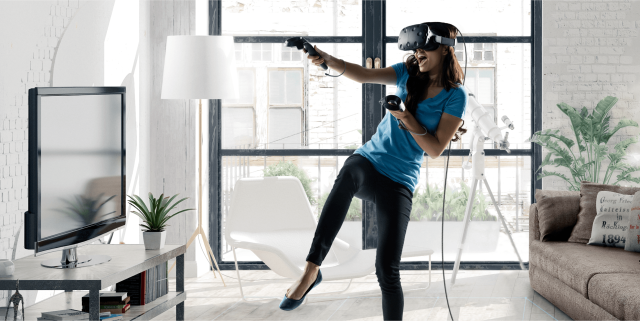What’s the next hottest place to buy ads, and what makes consumers even look at them? This week we explore budget trends, a surprising turn in mobile dominance and why less people are turning to hotels for their next vacation.
Renting Socially
Monthly visits to residential rental sites including Airbnb, VRBO and HomeAway are up 70.3 percent over the last three years, according to data by Hitwise, a division of Connexity. The report predicts that residential rental sites will surpass hotel direct sites in traffic within the next 12 months. These rental options are widely shared via social media, and receive more traffic (7.3 percent) from social sites over hotel aggregators like Booking.com (3.9 percent) or hotels directly.
Android Uprising
Mobile advertisers are spending more money on Android, according to September data on mobile ad spending from a report by mobile marketing firm Fiksu DSP. The data shows that Android is catching up to iOS with CPP rising 59 percent since September 2015.
“It’s clear looking at these metrics that among advertisers, Android is no longer an afterthought. Marketers know what to expect from iOS, including what they’ll earn and what they have to pay per user, so costs have settled into a more stable range,” said Micah Adler, CEO and founder of Fiksu DSP, in a statement. “Now, monetization levels on Android are proving that it can be as effective as iOS in terms of bottom line dollars, which is sending a signal to developers, publishers, and marketers that they should be putting more effort and money into their Android apps.”
To VR Or Not VR?
According to a poll taken by ClickZ Intelligence, 37 percent of US consumers have tried out a virtual reality headset versus 19 percent in the UK. The study consisted of 1,000 people in the US and 1,000 in the UK. Despite the increased awareness and hands-on experience, only six percent of Americans will own a VR headset this year, according to a forecast report by market researcher Strategy Analytics. Of those who own a headset, the report predicts, 93 percent will have basic smartphone models, while only one percent will buy the most expensive headsets, such as the Oculus Rift and the HTC Vive.
While consumers might hesitate to invest right away, businesses are definitely on board—DeLoitte published a survey in August that found 88 percent of mid-market companies (firms with annual revenue of between $100 million and $1 billion) were using some form of virtual or augmented reality as part of their business, such as tourism or health care. Citi predicts hardware sales, specifically of headsets, will be the primary driver of the industry’s growth and the VR and AR market will be worth $692 billion by 2025, rising to more than a trillion by the following decade.
Gunning For The Holidays
First-person-shooters are at the top of the holiday wish list, with two titles in particular. According to Nielsen Game Rank, 96 percent of gamers are excited for Call of Duty: Infinite Warfare and the same amount are just as excited about EA’s Battlefield 1. Final Fantasy XV comes in third at 95 percent anticipation, followed by Mafia III at 83 percent. The number one most-anticipated title for Xbox One is Gears of War 4 at a whopping 99 percent.
Brands And Agencies Disagree On Marketing Budgets
What is the most important type of marketing to invest in? According to a survey from Hanapin Marketing, 75 percent of US marketing professionals said that they plan to increase their AdWords budget in the next 12 months (as of August 2016), more than any other option. Following at 73 percent is mobile advertising and Facebook at 69 percent. Brands and marketing agencies have slightly different priorities, the study showed. Over 50 percent of brands cited social advertising as most important over the prior 12 months and 46 percent of agencies agreed. When it comes to social commerce, however, 38 percent of agencies called it the most important compared to only 26 percent of brands.
Feeling Free (With Ad Support)
Seventy-nine percent of consumers prefer to access free-or-ad-supported content, according to an online survey by CodeFuel and Nielsen. The data shows when and why participants interact with an ad. Forty-three percent will watch an entire video ad if it has interesting content, 39 percent click on an ad if it has an interesting offer and 28 percent will click if it’s an ad by a preferred brand. There’s still quite a bit of resistance to advertising, however, with 25 percent claiming that nothing would make them click on any ad.
The Sweet Sound Of Marketing
More brands are investing in digital audio, according to a recent study. Advertising Age and The Trade Desk, along with Advantage Business Research, surveyed 532 marketing and media professionals about the future of digital audio ads, and the potential impact of programmatic buying. In June, respondents said seven percent of their ad budgets were set aside for digital audio. but in the next 12 months, their investment in the format would likely grow to 11.6 percent. 67.5 percent of respondents in the US said that streaming music services are of interest when considering buying programmatically. Podcasts were the next choice at 41.7 percent and formatted music channels at 37.4 percent.
Pampering Pays Off
Diaper manufacturer Pampers ranks number one when it comes to brand experience, according to the latest Group XP’s The Experience Index. The study considered revenue, branding, store design, content, online presence and data from Millward Brown and BrandZ to measure customer satisfaction. Following Pampers on the list are Disney, Paypal, DHL and Facebook.
More People Watch Live TV On Cable
Can’t wait to watch your favorite shows? It turns out that when it comes to tuning in to live TV, more people do so on cable than on broadcast networks. TiVo Research’s Q2 State of TV report tracks time-shifting—watching at times other than when a show was broadcast—pulling data from more than 2.3 million households including TiVo owners and other cable providers. For cable prime-time viewing during the quarter, 88 percent was viewed live, with total day viewing even higher at 91 percent. Broadcast networks, however, saw only 74 percent viewed live, with 80 percent watching the same day as the original broadcast. In case you’re wondering who gets the most live views, it’s ESPN at 92 percent. The CW, meanwhile, is only watched live 56 percent of the time.


